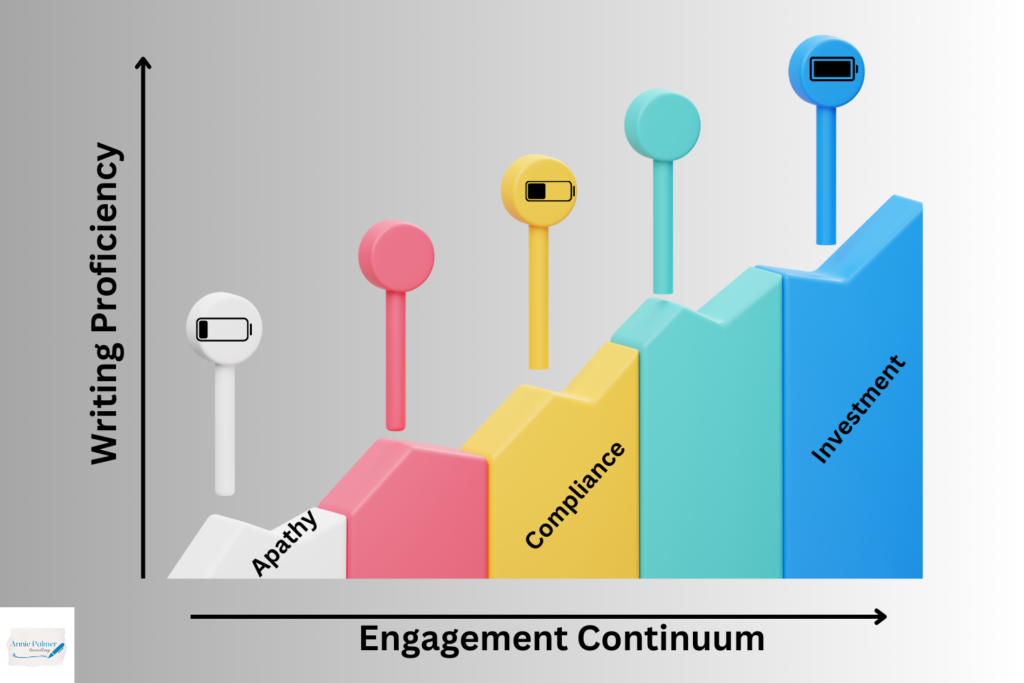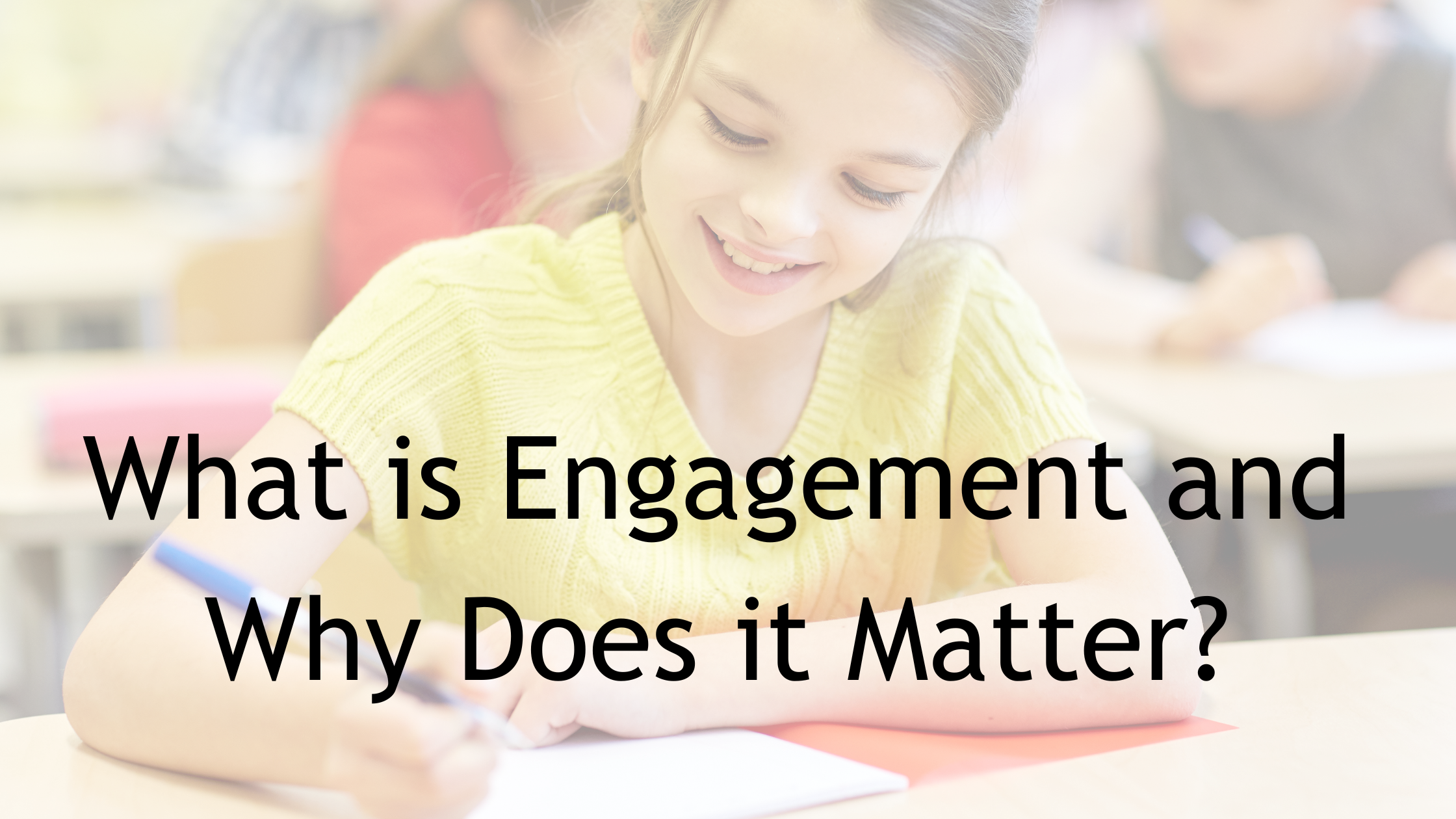What IS engagement in writing? Why does it matter? Can’t we just talk about standards?
Many of us grew up with writing instruction that was taught from a grammar book and assignments were given such as “Write about your summer vacation.” We all used the same graphic organizer. And, EVERYBODY’s writing was boringly similar. The teacher would go through and mark everything we did wrong that we needed to fix. We’d fix it and make our writing “perfect.” The teacher would post our summer vacation stories on the wall for anyone who took the time to stop walking by to read.
There was not a lot of teaching of HOW to write and certainly there wasn’t a focus on learner agency, voice and choice, engagement and life-long writing. We didn’t talk about who our writing was for (the audience). There was no discussions on how to come up with ideas because you just wrote what the teacher told you to write. We didn’t study mentor texts. We just watched the teacher fill out her organizer and then we filled out ours. We received our writing back from the teacher with red marks or maybe a sticker.
Now, let’s envision something different. Imagine a classroom that is STILL focused on teaching standards and the goal is writing proficiency. But, the conditions for learning were focused on engagement (and as a result, life-long writing). Here’s what’s taking place in this classroom.
- The teacher was preparing to teach a realistic fiction unit and started planning the unit with two things in mind: the standards and the teaching points she found in authentic texts (mentor texts). For primary, this would be picture books. For upper elementary it is writings like short stories from children’s magazines. She knew that to develop her student’s writing identity, they had to see themselves as writers. It’s hard to see your identity as a writer if all you do is write assignments for the teacher. She knew she needed REAL books (or short stories) so the students would know they are writing just like real authors do (because our students ARE real authors). The work they would do is very similar to the work they see in the mentor texts. The teacher would use the mentor texts in the lessons she was teaching.
- In addition to them seeing themselves as authors, they would have a vision for their work. Almost anything we do (start a home project, design a website, apply for a scholarship, etc) we look for a model. What does this work look like when completed–how is it done successfully? Then, we try to model our work after that. Not exactly like it, but we certainly pull good ideas from the model–ideas we likely would not have thought of on our own.
- The teacher in this classroom sits beside students and asks them “Who are you writing this for?” Hint – It’s not necessarily for the teacher. It could be a friend, family member, coach, grandparent, etc. Having an audience provides a purpose and value to the work that increases engagement.
- The teacher’s focus is on nudging the student, capitalizing on their strengths, as they try to work on one thing to make their writing better. It’s just right teaching, while still working on the overall goals of the unit.
- The teacher will also ask what the topic is of the writing because she doesn’t assign topics. Who is the most proficient writer they can be when they are forced into always writing a topic that someone else gave to them? By choosing their own topic, they have energy for writing. They feel validated in their ideas and values, which also creates energy. And, they have background knowledge to provide better details and more voice. Research is clear that background knowledge is directly correlated to literacy achievement.
- And, finally, the teacher only does some of the talking when conferring. They student is taught to drive the conversation creating learner agency and reflection. Establishing the habit of reflection allows them to build their ability to do this in every area of their life, not just in writing. They become better self reflectors in relationships, in conflict and in everyday encounters. They are better because of this and so is the world.
These are conditions for engagement, but how do we define it? Engagement is simply a student’s disposition towards learning. At one end is apathy and at the other end is investment. Smack dab in the middle is compliance. There’s a direct correlation between engagement and writing proficiency. (See the image below). And, there’s a direct correlation between writing engagement and life-long writing. This is why it matters. It matters to the classroom now and to the life of the student later.




